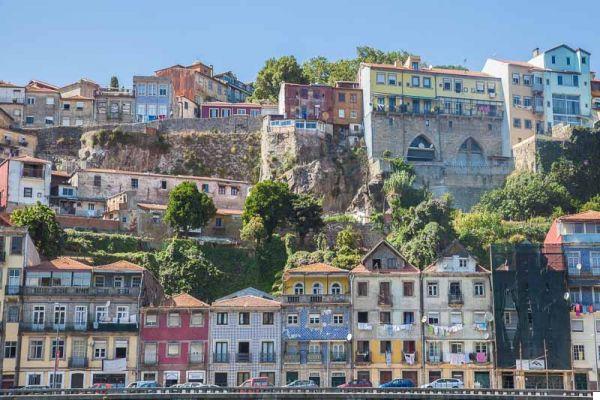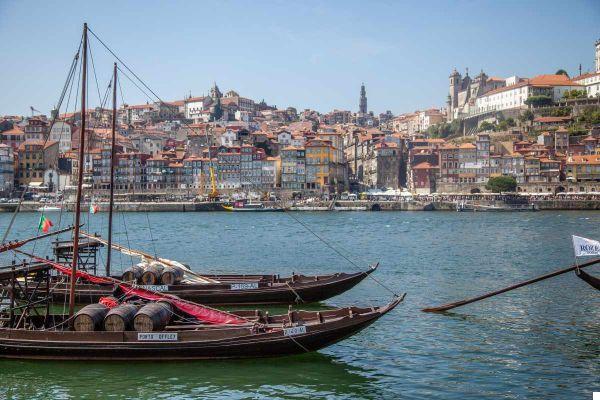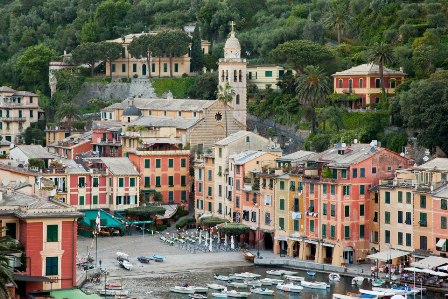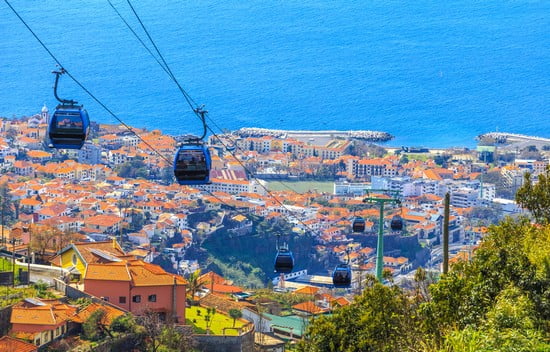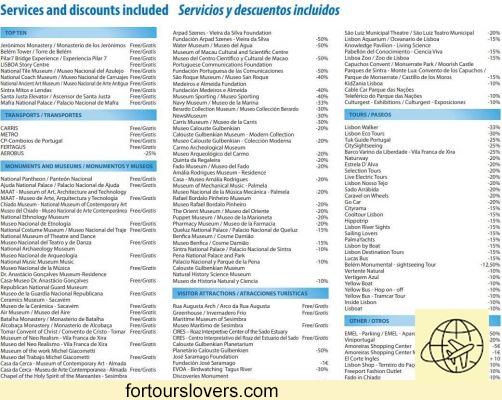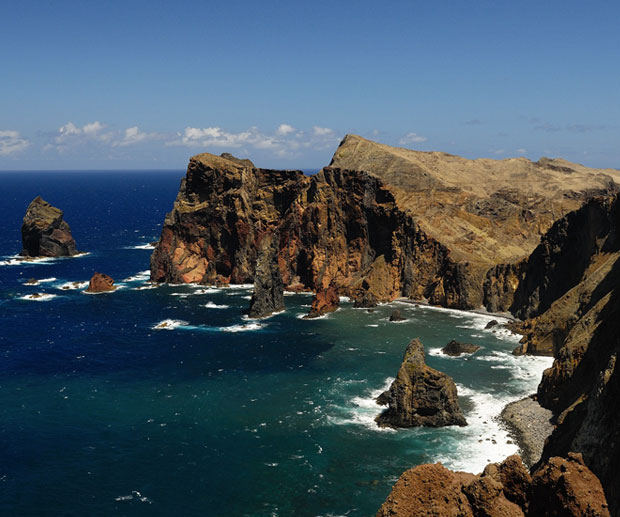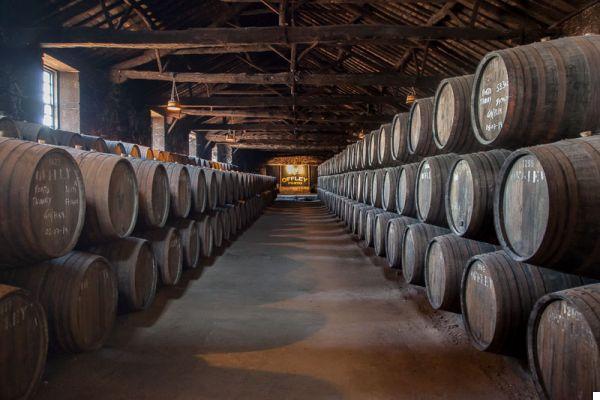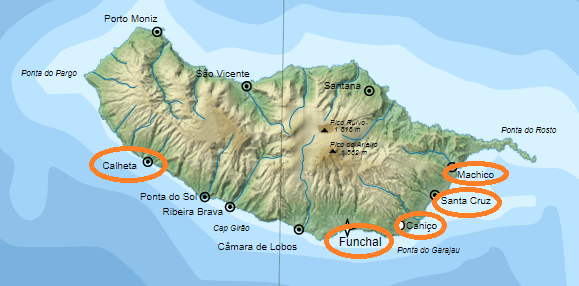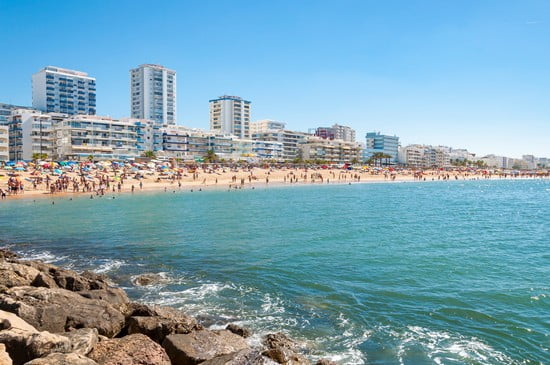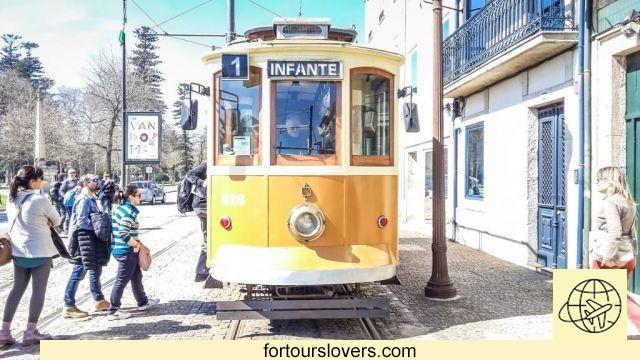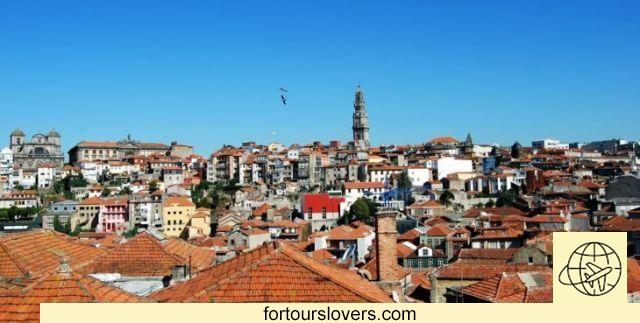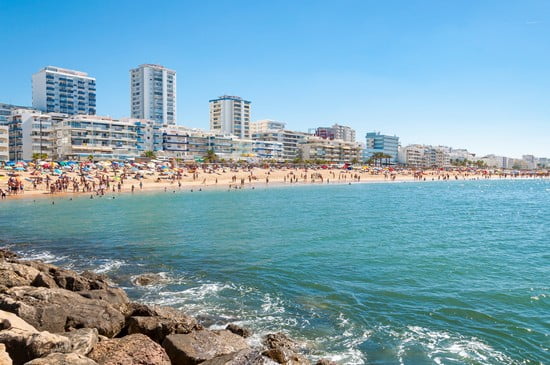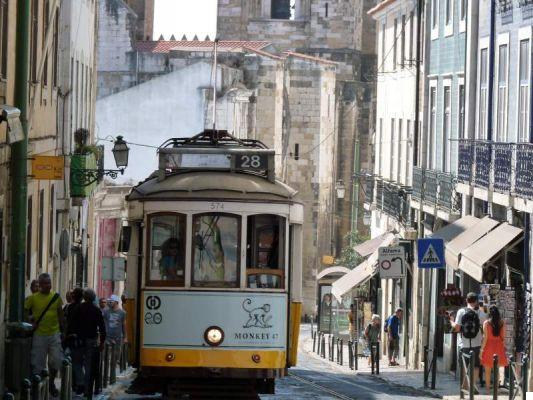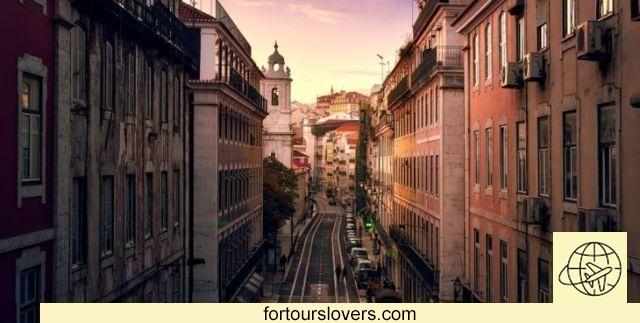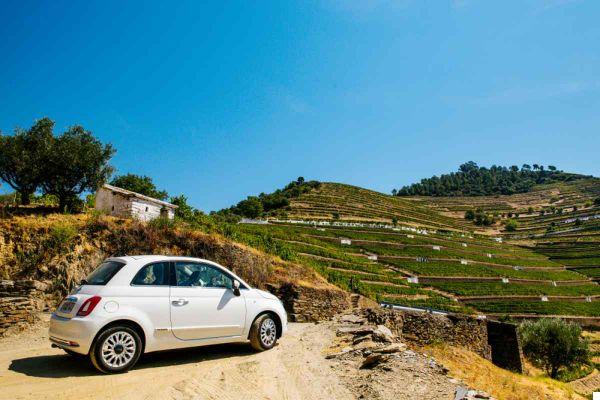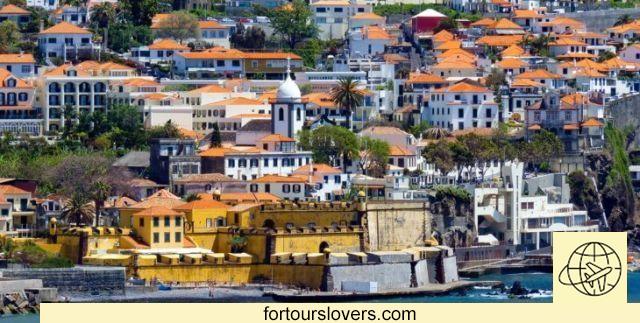
Madeira Island
12 things to do and see in Madeira and 1 not to doMadeira Island, in Portugal, is a 'island for demanding tourists looking for different experiences both from the usual Mediterranean packages and from the excesses of the nearby Spanish Canary archipelago. Together with the latter, in fact, Madeira (and the other islands that make up the archipelago of the same name) forms the Macaronesia, a region which also includes the Azores (Portugal) and the islands of Cape Verde (African country). It is a large group of islands of clear volcanic origin that boast a climate eccellente, fishy coasts (Atlantic Ocean) e fertile soils. We have already seen how the Canarian landscape is quite barren, in the case of Fuerteventura almost desert. The Madeira landscapeinstead, it definitely is lush. The strong humidity, together with the mild and sunny climate, favored the growth of a very luxuriant vegetation. Just think that i Laurisilvia woods, on the northern side of the island, were inserted byUNESCO international convention against doping in the sport between World Heritage Sites. Life mostly focuses on capital Funchal where most of the 300.000 inhabitants of the island live, and where almost all the main tourist attractions of the area are concentrated. Below we go to discover them more closely. Happy reading.
1 Cathedral
Almost always the first thing to be visited once set foot in Funchal is there Be Cathedral of the Assumption of the Virgin Mary, whose bell tower dominates the sky line citizen. The church, dating from the XNUMXth century, is a perfect compendium of Lusitanian sacred architecture. In fact, it recurs the same characteristics already encountered in Lisbon, namely that happy marriage between Hispano-Arabic (Mudejar style) e late Gothic (Manueline style) which in turn refers to the external dominations and the colonial history of Portugal. Noteworthy is thealfarje, the spectacular cedar ceiling with incrustations of ivory and shells, and thehigh altar in gothic style. Too bad for the bell tower which, despite its grandeur, cannot be visited. For more information visit the Official site of the church: www.sefunchal.com.
2 Quinta des Cruzes Museum
Despite being a dot in the middle of the Atlantic Ocean, moreover it is closer to Africa (approx. 600 km) than to Portugal (Lisbon is 1000 km.) Madeira Island it has never been a poor island. Indeed, since XV century, became a important trade hub of the motherland. The circumstance, of course, favored the consolidation of an extensive merchant class which on the island had the base for its trade. Not surprisingly, the Museu Quinta des Cruzes, is none other than the residence of João Gonçalves Zarco the discoverer of Madeira and the archipelago of the same name. After his death in 1471, the mansion underwent several changes, the most important in the 700th century when another wealthy family, the Lomelinos, undertook a radical renovation of the building. The Museum houses furniture, ceramics, paintings, tapestries and other furnishings that belonged to thearistocracy of the island for a time span from the XNUMXth to the XNUMXth century. A historical excursus, with information sheets in English, which gives a good idea of the colonial force dell 'Portuguese empire. Very nice too garden in front of the building. To learn more, visit the place: http://mqc.gov-madeira.pt.
3 Museum of Sacred Art
Can an island in the middle of the Atlantic be a territory rich in art and culture? In the case of Madeira absolutely yes and we have already seen it in the previous paragraph dedicated to the Museu Quinta das Cruzes. To fully understand the centrality of this island in the balance ofLusitanian empire it must be borne in mind that the cathedral had jurisdiction over all Portuguese overseas territories. This circumstance favored ahuge collection of works of art today visible in the rooms of the Museu de Arte Sacra in Rua do Bispo. Not only jewelery, crucifixes, monstrances and screens belonged to the bishopric of the island; in the rooms of the museum they are also exposed paintings and statues belonged toMadeirense aristocracy of the fifteenth and sixteenth centuries. To learn more, visit the Official site: www.museuartesacrafunchal.org.
4 Velha area
In spite of his being the "old area" of Funchal, the neighborhood, in the last 20-25 years, has become the hub of Madeira's nightlife. What they were old fishermen's houses and nineteenth-century residences abandoned have gradually turned into bars, restaurants and art galleries. Rua de Santa Maria and the main road, the one where most of the activities are concentrated and where tourists and residents are happy to linger in the evening. The small one at the eastern end of the street is worth seeing Capela of the Holy Body (see photo), an ancient fishermen's church dating back to the XNUMXth century. The building of which, it must be said, only the portal remains the original one, is one of the most photographed places in the area. In general, however, it is better to take your camera with you. Velha area, among narrow streets, arches and more or less hidden views gives beautiful photographs that will remain in the eyes and heart for a long time. Seeing is believing!
5 Mercado dos Lavradores
Il Farmers Market is one of main tourist attractions of Madeira. Every day between cruise passengers, tourists and residents, the area, which is located in the center of Funchal, in the historic core of Santa Maria, is visited by thousands of people who move at ease among the kiosks and shops in the area. It means that, without prejudice to thetourist appeal to which we have just mentioned, the Mercado dos Lavradores preserves its intact commercial vocation primarily for the needs of the islanders. Flowers, fruit, fish and meat are the merchandise on display. We speak, in any case, of local excellences: from sterlizia, the symbolic flower of the island, to tamarillo, papaya and bananas grown in large quantities, to swordfish caught in the near Atlantic. On this last point (the fish market) a clarification is necessary: if you are interested in attending the buying and selling fish you have to go to the market early in the morning. The risk, to move later than necessary, is not to find anything. Not to be missed!
6 Frente Mar
A walk around the Funchal promenade is a must on a holiday in Madeira, especially as Frente Mar is one renowned hotel area and therefore you are likely to choose to stay in the area. It is a classic promenade lined with cafes, restaurants and lookout points (Jardim Panoramico). However, the care of the places is striking, a sign of the great attention that public and private give to tourist accommodation. At the end of the walk, along which there are several bathing establishments (Complexo Balnear Ponta Gorda, Doca do Cavacas, pictured), there is Praia Formosa, the largest and most public beach in Madeira. In reality, these are four beaches one after the other: Praia Nova, Praia Formosa, Praia Dos Namorados e Praia do Areero. All stand out for the cleanliness of the water and the services offered to bathers, including the little ones.
7 Mt
Monte is a must of a visit to Madeira. It is a suburb of Funchal 500 meters above sea level where, until the end of the 800th century, the wealthiest families on the island moved during the summer to escape the heat of the coast. Therefore, the neighborhood has retained a certain aristocratic imprint which still today is evident above all from the particular care dedicated to the present green. The Jardim Tropical Monte Palace, half garden and half museum, and the Parque Municipal do Monte, with its great variety of exotic trees and plants, are worth a visit. Do not miss the Igreja da Nossa Senhora, a small baroque church famous, among other things, for hosting the remains of Charles I, last ruler of Austria buried in the side chapel to the left of the entrance. Almost all of them reach the resort via the cable car, the Teleferico do Funchal, departing from the Zona Velha. To go down, however, it is better to take the "Carrihos", characteristic wicker sledges led by two drivers in white shirts and straw hats. Not surprisingly, Monte is called "A frequesia dos carrinhos", just to underline the particularity of this means of locomotion which, it is said, particularly fascinated Ernest Hemingway.
8 Jardim Botanico
One of the essential stops on a trip to Madeira is Jardim Botanico certainly deserves a place of honor. The address is Middle path, about three kilometers from Funchal. If desired, the park can also be reached in funivia starting from Monte with the advantage, therefore, of transforming the visit of the two places into a single itinerary. This is the garden with the largest collection of exotic plants in the world. An area of 80.000 square meters in which it is beautiful to walk paying attention to the thousands of species present among cactaceae, palm trees and medicinal plants. It's not over, because with the same ticket you can also visit the Louro Parque, an avian park that hosts several species of parrots, canaries and other birds of the variegated fauna of Madeira. Finally a piece of advice. So much variety (the park also has a wonderful viewpoint) must absolutely be immortalized. So, don't forget your camera. For more information visit the Official site: www.sra.pt/jarbot.
9 CR7 Museum
Madeira is also theisland of Cristiano Ronaldo. The champion of Real Madrid and, before that, of Manchester United e Sporting Lisbon, in fact, was born and raised in Funchal to a working family. Despite his sporting and economic success, the Madrid ace, as well as captain of the Portuguese national team, has never cut the cord with his hometown where he invested part of his considerable wealth. Houses, hotels (click here for the hotel list on Booking.com) and even a museum where you can exhibit the countless individual and team trophies won over the years of career in Portugal, England and Spain. The museum was opened in 2013 and expanded in 2016 after the award of the European Championship with the national team. In short, if you are passionate about football (in Funchal it is by far the most practiced sport) you cannot help but visit the CR7 Museum in Rua Princesa Dona Amélia. For more information visit the Official site: www.museucr7.com.
10 Camacha wicker factory
About seven kilometers from Funchal, heading north-east, there is Camacha small town ofoutback of Madeira a 700 meters above sea level. The country has kept its own rural charm, of ancient peasant village away from the coast, and is especially famous for apple cultivation, to which a special festival is dedicated annually. For the cultivation of apples and for the wickerwork, for a long time the main activity of the territory. In truth, Boaventura, a fraction of the municipality of Sao Vicente, is also famous for this typical handicraft production, but in Camacha there is a wicker factory-museum that tourism has turned into one of the island's main attractions. The focus of production is in a building in the historic center called "O Relogio", where it is possible to buy baskets, baskets, bags, dolls' houses, suitcases, candlesticks and an infinity of other objects, large and small, worked by the skilled hands of local weavers, at very cheap prices considering the quality of the products. Not to be missed!
11 Curral das Freiras
About half an hour by bus from Funchal there is a small village that is absolutely worth a visit. We are talking about Curral das Freiras (trad. "Valley of the Nuns"), a few thousand souls a 300 meters above sea level in the midst of the lush volcanic nature of Madeira. In addition to tourism, the main source of livelihood of the local community is thechestnut breeding. Many typical dishes are in fact based on chestnuts, and an important village festival is dedicated to the fruit in early November. As mentioned, the town is easily accessible by public transport, but there is amore scenic alternative: arrive comfortably by bus up to Eira do Serrado (another small town with hotels, restaurants, souvenir shops, etc.) and then continue down the road that connects the two towns. The difference in altitude is about 700 meters (Eira do Serrado is at 1094 masl), while the distance to be covered is less than 5 kilometers. Obviously, nothing prevents you from doing the reverse. The climb, certainly more tiring, is preferred by many hikers due to the less stress on the knees. To do!
Official Website: www.jf-curraldasfreiras.pt
12 Porto Santo
Madeira is the largest island in the archipelago of the same name of which they are also part 6 uninhabited islands (Desert Islands and Wild Islands) and l 'Porto Santo island. The latter, 50 kilometers northeast of Madeira, has just over 5000 inhabitants and is daily connected with the other by ferry. Porto Santo does not have much to offer for tourists, but what little it has leaves you astonished by the beauty of the places. In particular the very long beach, over 7 kilometers of beach, which extends from the port to Punta da Calheta, southern end of the island. The other point in favor of Porto Santo is the mild climate almost all year round. Obviously, in summer it is much more popular, but there are those who prefer the winter face, perhaps a little more melancholy, but absolutely heavenly for the spaces and environments available. To learn more, visit the website: www.porto-santo.com.
1 Do not go near beaches and coasts in case of bad weather
It is the only precaution to be taken into consideration in Madeira. The waves and storm surges are those of the Atlantic Ocean and therefore it is advisable to be cautious and not to be submerged. For the rest, the island records a very low crime rate and therefore you have to be absolutely calm and relaxed.




